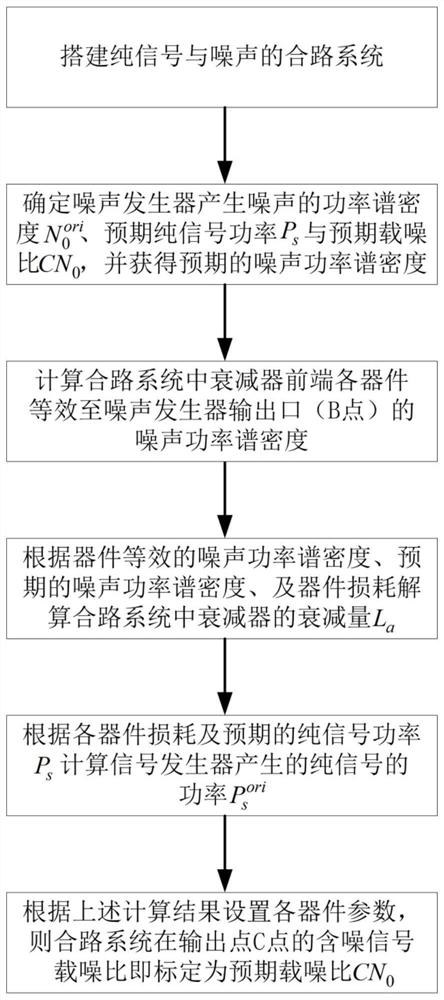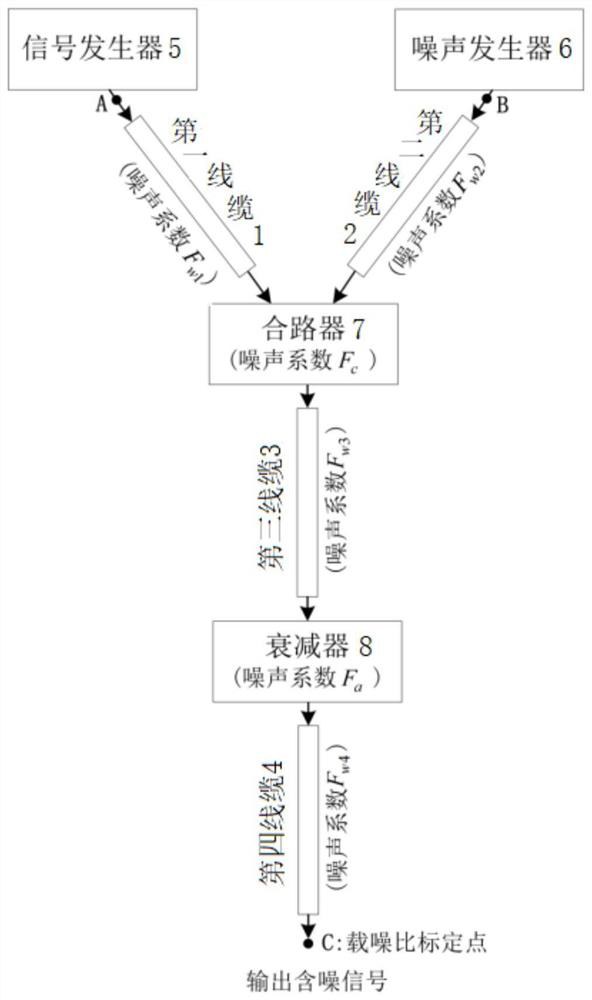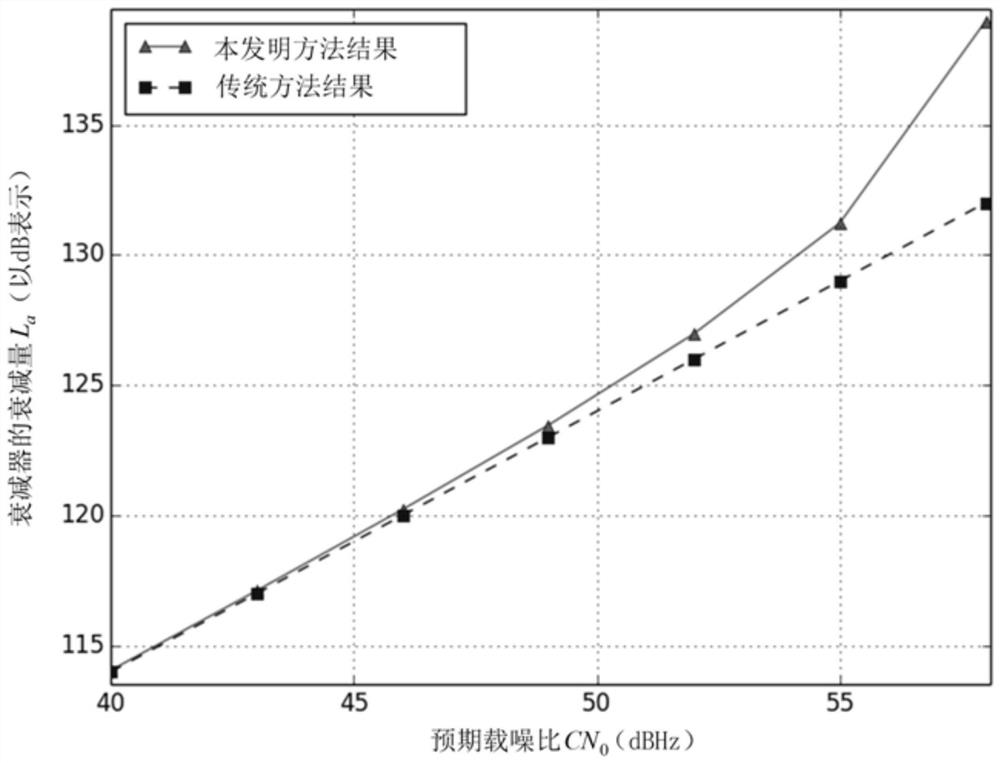Carrier-to-Noise Ratio Calibration Method of High-precision Noise-fixed-Signal Transformation Method
A calibration method and carrier-to-noise ratio technology, applied in noise figure or signal-to-noise ratio measurement, line transmission components, line transmission monitoring/testing, etc., can solve the problems of large error of real carrier-to-noise ratio and influence of engineering applications, etc., to achieve The effect of reducing calibration error, improving quality, and improving engineering design efficiency
- Summary
- Abstract
- Description
- Claims
- Application Information
AI Technical Summary
Problems solved by technology
Method used
Image
Examples
Embodiment
[0042] The carrier-to-noise ratio calibration method of the high-precision noise-fixed-signal conversion method of the present invention, such as figure 1 As shown, follow the steps below:
[0043] S1, build a combined system of pure signal and noise, see figure 2 ; The combined system includes a signal generator 5, a noise generator 6, a combiner 7, an attenuator 8, and a coaxial cable, and the output port of the signal generator 5 and the output port of the noise generator 6 pass through the cable respectively Connect with combiner 7, combiner 7 is connected with attenuator 8 through cable; The signal flow in the system is: signal generator 5 produces pure signal (corresponding to figure 2 point A), while the noise generator 6 produces white noise (corresponding to figure 2 point B), the pure signal is input to the combiner 7 through the first cable 1, and the white noise is input to the combiner 7 through the second cable 2, and the noise-containing signal output by th...
PUM
 Login to View More
Login to View More Abstract
Description
Claims
Application Information
 Login to View More
Login to View More - R&D
- Intellectual Property
- Life Sciences
- Materials
- Tech Scout
- Unparalleled Data Quality
- Higher Quality Content
- 60% Fewer Hallucinations
Browse by: Latest US Patents, China's latest patents, Technical Efficacy Thesaurus, Application Domain, Technology Topic, Popular Technical Reports.
© 2025 PatSnap. All rights reserved.Legal|Privacy policy|Modern Slavery Act Transparency Statement|Sitemap|About US| Contact US: help@patsnap.com



